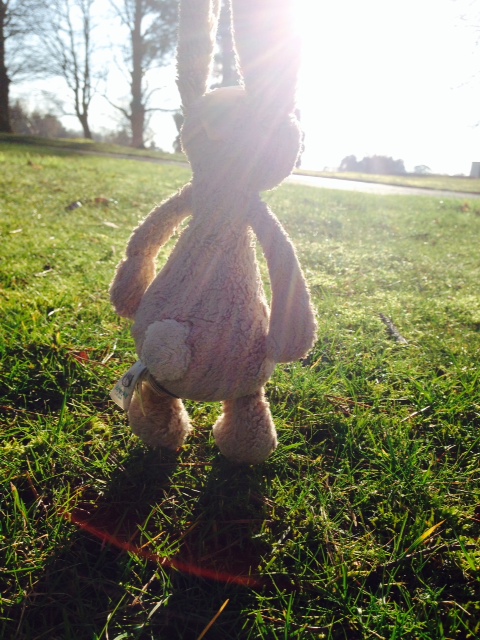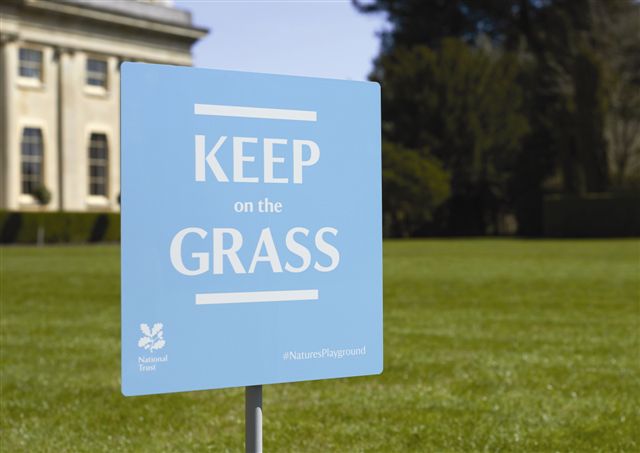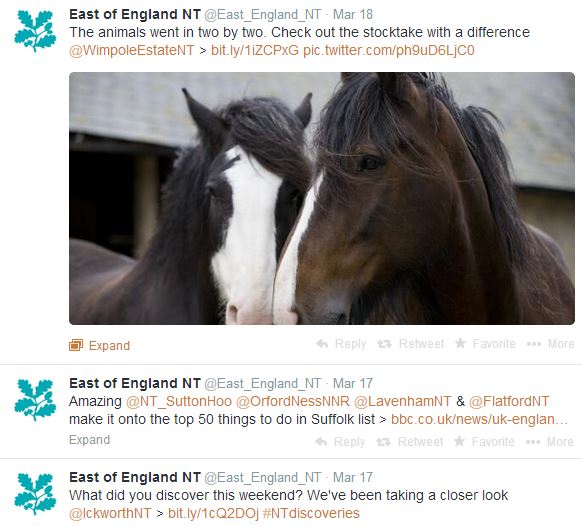Notes from an insider: The National Trust and social media
We love to hear about how big brands approach social media.
Jemma Finch from the National Trust in the East of England tells us what it's like to manage their communities on Facebook and Twitter, and shares her insider tips on how to make social media work for you if you are in the charity, historical or leisure sectors.
How does the National Trust approach social media?
I think the world of digital is a great way of challenging perceptions and helping to engage with new supporters. It helps us appeal to a wider group of people and show them the breadth of the special places we look after for them to enjoy.
It’s also a great way to engage with our existing supporters, giving them a heads up of what’s happening where, becoming a place where they can interact and share their thoughts with us.
What do you love about working for the National Trust’s communications team?
Every place has a different story to tell, there are some amazing staff and volunteers who are passionate about what they do and it’s amazing to see places change with the seasons – so we’re never short of a good photograph.
You can’t beat those behind the scenes glimpses too; I certainly never tire of finding out what the latest discovery is or what project we’re working on next. And our supporters love this content too.
So yes you get to share some amazing places and stories, but what I love is to see photos, blogs and tweets about what those places mean to people.
What does an average day involve?
Since working for the National Trust there have been many developments in the world of digital and now a large part of my time is spent looking and compiling content for our website, blog and social media channels. As well as helping to advise our teams on the ground at our places within the region.
It doesn’t seem five minutes since I set up our Twitter account, which now has over 11,000 followers who we engage with on a daily basis.
What have been your favourite successes thanks to social media?
‘We’ve had some great stories on social media over the last year – our #NaturesPlayground signs certainly challenged perceptions and created quite the buzz. The lost bunny at Sutton Hoo that had its photo taken and was given the hashtag #Hoolostbunny was seen by over 600,000 people (and before you ask, yes we did manage to reunite it with its owner).
We also had a sheep that thought it was a deer that was captured by our shepherd on an iPhone. This went viral on YouTube and has now had over 100,000 hits and press attention from around the world!
Also, it has been a great way for us to communicate our more serious messages and updates following last December’s tidal surge.
Jemma Finch works in the marketing and communications team at the National Trust in the East of England. They promote conservation work, places to visit, events, holiday cottages, outdoor activities, fundraising campaigns and scones (they tend to talk a lot about scones…)
Follow National Trust East of England on Twitter: @East_England_NT
The National Trust's 12 tips for social media success
Is there anyone out there? Before you start, work out who your audience is and what you want to tell them.
Choose the right channel for you. Don’t run before you can walk. Concentrate on getting one channel right first.
Tone of voice is key. Steer clear of jargon and add some personality. Don’t be afraid to add in a little humour.
Spark conversation. Find quirky and unusual content to share, from behind the scenes glimpses to quirky facts.
It’s a two-way conversation. Ask questions and involve your audience. Engage with your community.
Join in. Comment on interesting stories to join existing conversations and get seen by potential fans.
Images are king. It’s true, a great image can say 1000 words, which is quite handy when you’ve only got 140 characters!
Hashtags are great, but don’t go over the top. They’re great for joining conversations, sharing campaigns and sometimes just because it’s funny. But use them sparingly to be effective.
Regular and timely content. Make sure you post regular content and comment on stories that are in the news there and then, things soon become old news on social media!
Chat when your community is online. Schedule content in, respond to comments and make it part of your routine.
You represent an organisation. So best to keep your personal views out of it. If in doubt, don’t say it.
And finally, what’s the point if you don’t tell people you have a social media account? Offline is just as important as online.

















